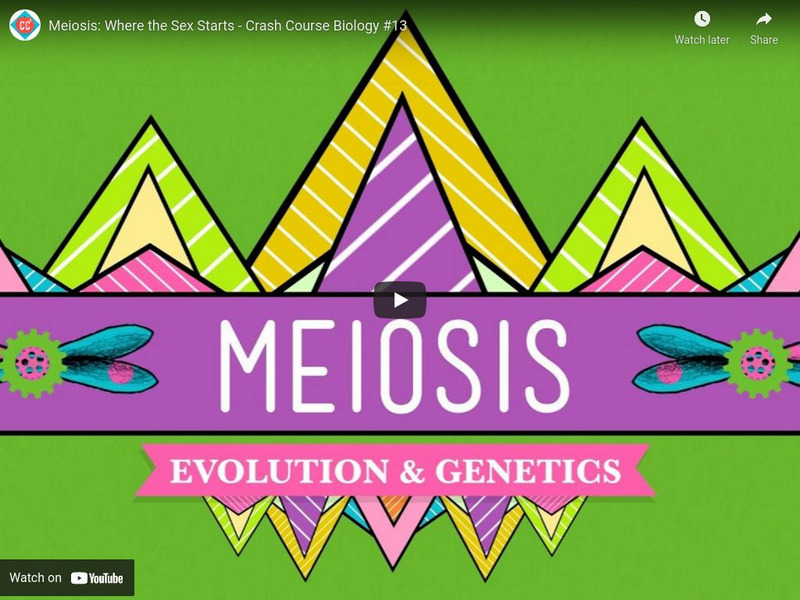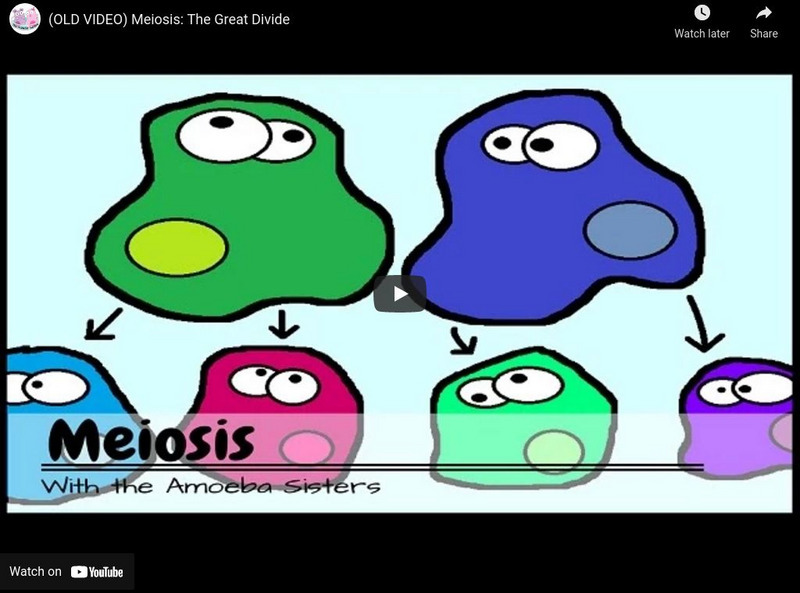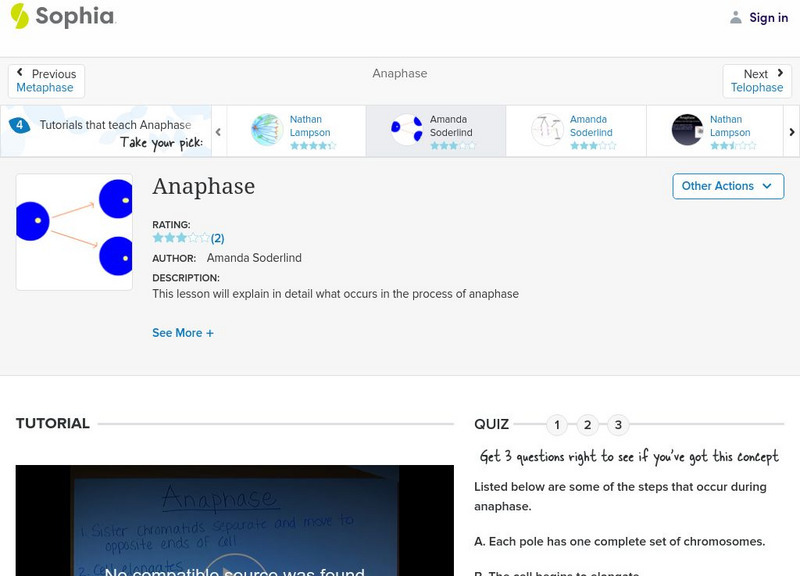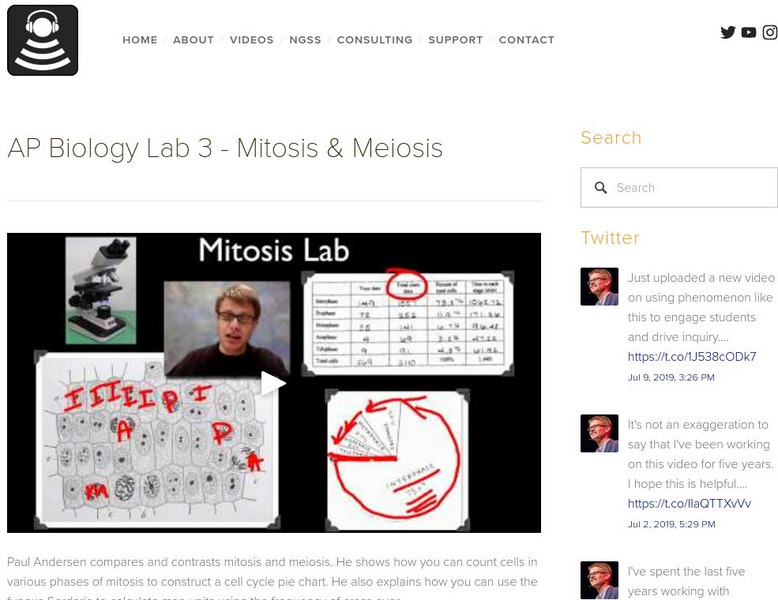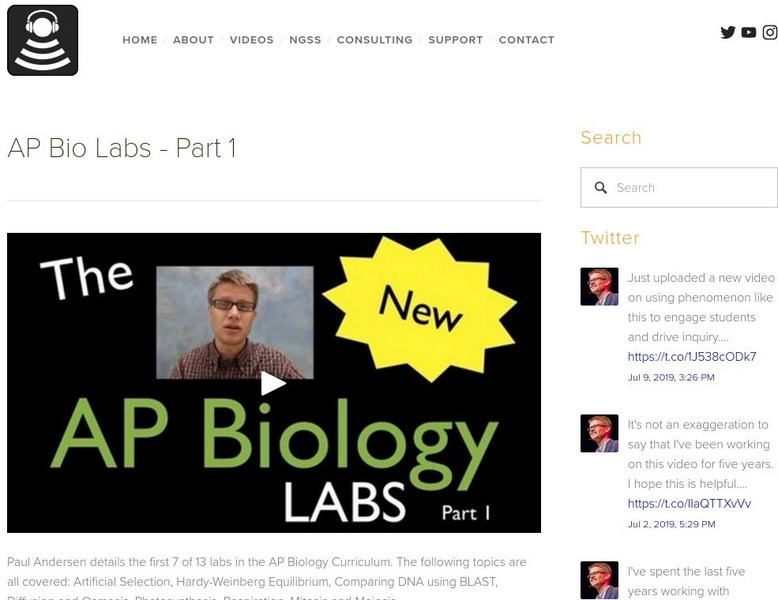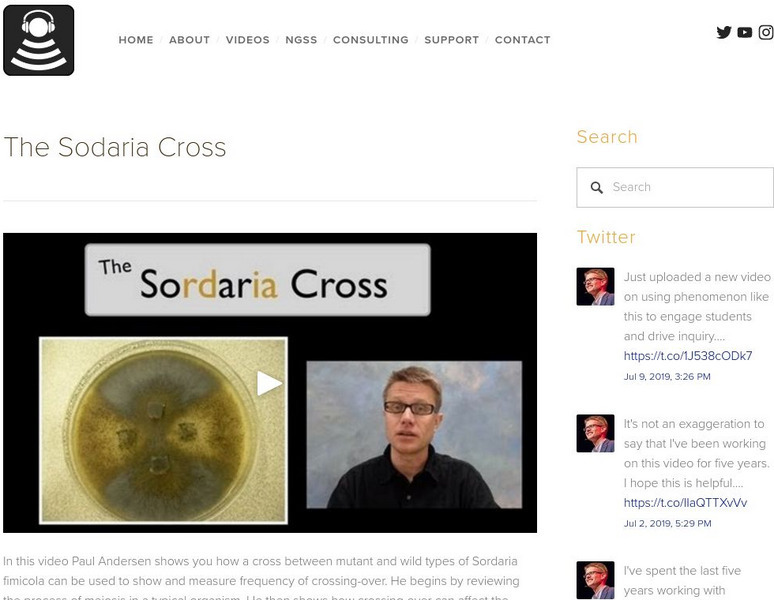Hi, what do you want to do?
Crash Course
Crash Course Biology #13: Meiosis: Where the Sex Starts
Hank gets down to the nitty gritty about meiosis, the special type of cell division that is necessary for sexual reproduction in eukaryotic organisms. [11:43]
Amoeba Sisters
Amoeba Sisters: Meiosis
This video will guide students through the process of meiosis. Understand why meiosis is called the reduction division and how it produces unique cells. Also discussed in the video is the differences and similarities between mitosis and...
Khan Academy
Khan Academy: Reproduction and Cell Division: Phases of Meiosis Ii
See how sister chromatids separate to form gametes during the stages of meiosis including prophase II, metaphase II, anaphase II, telophase II. [10:57]
Khan Academy
Khan Academy: Reproduction and Cell Division: Phases of Meiosis I
Learn how homologous chromosomes separate into two sets during prophase I, metaphase I, anaphase I, and telophase I. [9:44]
Khan Academy
Khan Academy: Reproduction and Cell Division: Chromosomal Crossover in Meiosis I
Learn how homologous chromosomes exchange fragments in prophase I, tetrads, chiasmata, and alleles. [12:15]
Khan Academy
Khan Academy: Reproduction and Cell Division: Comparing Mitosis and Meiosis
Comparison of the processes of mitosis and meiosis. Mitosis produces two diploid (2n) somatic cells that are genetically identical to each other and the original parent cell, whereas meiosis produces four haploid (n) gametes that are...
Khan Academy
Khan Academy: Boveri Sutton Chromosome Theory
Overview of how chromosomes were first proposed as the carriers of Mendel's 'heritable factors' (what we now call 'genes'). [10:58]
Khan Academy
Khan Academy: Zygote Differentiating Into Somatic and Germ Cells
In this video [9:34] learn how a zygote, the single cell produced by fertilization, divides by mitosis to produce all the tissues of the human body (including germ cells, which can undergo meiosis to make sperm and eggs).
Sophia Learning
Sophia: Meiosis & Genetic Variability: Lesson 1
This lesson will discuss how the process of meiosis produce individuals with varied combinations and variations of parental genes. It is 1 of 3 in the series titled "Meiosis & Genetic Variability." [5:22]
Sophia Learning
Sophia: Zygote: Lesson 2
This lesson will explain how a zygote develops into an embryo. It is 2 of 5 in the series titled "Zygote."
Sophia Learning
Sophia: Anaphase: Lesson 2
This lesson will explain in detail what occurs in the process of anaphase. It is 2 of 4 in the series titled "Anaphase."
Sophia Learning
Sophia: Meiosis: Formation of Gametes: Lesson 2
This lesson will explore the process of meiosis in developing sperm and egg cells. It is 2 of 5 in the series titled "Meiosis: Formation of Gametes."
Sophia Learning
Sophia: Interphase
Learn the processes that happen in interphase to prepare the cell for division on this webpage. Webpage includes an audio lesson as well as an image. [0:23]
Bozeman Science
Bozeman Science: Cell Cycle, Mitosis and Meiosis
Paul Andersen explains how the cell cycle is used to create new cells. The creation of identical diploid daughter cells, through mitosis, is described. The creation of unique haploid daughter cells, through meiosis is also described....
Bozeman Science
Bozeman Science: Ap Biology Lab 3 Mitosis & Meiosis
Paul Andersen compares and contrasts mitosis and meiosis. He shows how you can count cells in various phases of mitosis to construct a cell cycle pie chart. He also explains how you can use the fungus Sordaria to calculate map units...
Bozeman Science
Bozeman Science: Ap Biology Labs Part 1
Paul Andersen details the first 7 of 13 labs in the AP Biology Curriculum. The following topics are all covered: Artificial Selection, Hardy-Weinberg Equilibrium, Comparing DNA using BLAST, Diffusion and Osmosis, Photosynthesis,...
Bozeman Science
Bozeman Science: Meiosis
Paul Andersen explains how the process of meiosis produces variable gametes. He starts with a brief discussion of haploid and diploid cells. He compares and contrasts spermatogenesis and oogenesis. He explains how each person is...
Bozeman Science
Bozeman Science: The Sodaria Cross
In this video, Paul Andersen shows you how a cross between mutant and wild types of Sordaria fimicola can be used to show and measure frequency of crossing-over. He begins by reviewing the process of meiosis in a typical organism. He...
Bozeman Science
Bozeman Science: Variation of Traits
In this video, Paul Andersen explains how variation is created in a population over time. Variation in offspring is caused by genetic recombination, mutations and environmental effects. Parental DNA is recombined using the process of...





